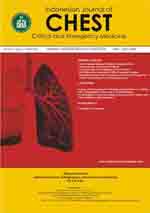
COVID-19 Pulmonary Fibrosis From Acute Infection to Chronic Complications
Gede Ari Mahendra Mardaningrat1*, Putu Andrika2, Isabella Soerjanto Putri1, I Putu Hendri Aryadi1
1 Faculty of Medicine, Udayana University, Denpasar, Bali, Indonesia
2 Division of Pulmonary and Critical Care, Department of Internal Medicine, Udayana University/Prof. dr. I.G.N.G Ngoerah Hospital, Denpasar, Bali, Indonesia
Abstract
Background: SARS-CoV-2 is a virus that appeared in 2019 and led to the illness known as COVID-19. In the post-COVID-19 infection stage, a lot of patients suffer from fibrosis sequelae and alterations in pulmonary function. This systematic review and meta-analysis aimed to establish the frequency of pulmonary fibrosis after COVID-19 infection, identify risk factors, and recognize biomarkers linked to pulmonary fibrosis development post-COVID-19 infection.
Methods: Following PRISMA and MOOSE guidelines, studies published between January 1, 2020, and June 31, 2024, were analyzed.
Results: Fifteen studies (2,240 patients) revealed a 42.7% prevalence of post-COVID-19 pulmonary fibrosis. Patients with fibrosis were older (mean age 60 years vs. 49.5 years). Heart disease was a significant comorbidity. Symptoms included shortness of breath, chest pain, and muscle pain (p<0.05). Severe COVID-19 (ICU admission, mechanical ventilation, steroid/immunoglobulin therapy) increased fibrosis risk (p<0.05). Radiological findings included consolidation, ground-glass opacity, parenchymal bands, and interlobular thickening. Elevated IL-6, TNF-α, LDH, CRP, and D-dimer levels correlated with fibrosis (p<0.05).
Conclusion: Post-COVID-19 pulmonary fibrosis affected 42.7% of patients, strongly linked to severe COVID-19 and associated treatments. Common lung abnormalities included consolidation and parenchymal bands. Biomarkers IL-6, TNF-α, LDH, CRP, and D-dimer were significant contributors to fibrosis development.
Keywords: Acute infection, Chronic complications, COVID-19, Pulmonary fibrosis, SARS-CoV-2



